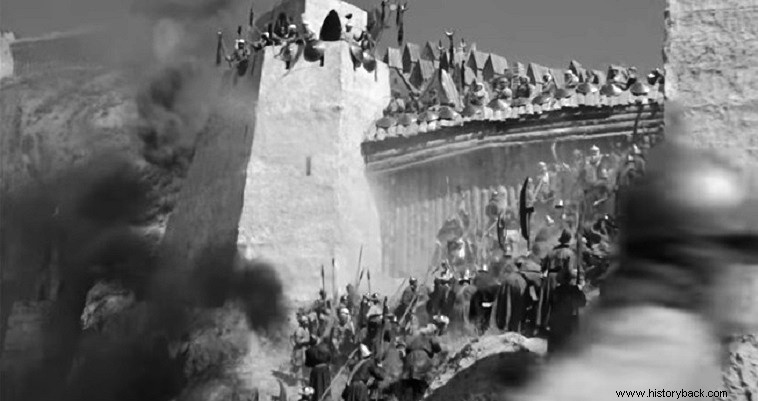
The Tatars of Kazan, together with their fellow-citizens of Astrakhan and Crimea, were, for centuries, the main rivals of Russia. The Tatars, descendants of the Mongols of the Golden Horde, who conquered Russia, for about two centuries, raided Russian lands at regular intervals, spreading terror and panic.
Ivan the Terrible himself had attempted several campaigns against Kazan, to no avail. In 1552 he decided to try again. This time he assembled an army of 150,000 men, of whom, however, less than half were fighting men. The rest were conscripted serfs, destined to perform the manual labor required during a siege.
The Tartars, for their part, advanced 30,000 elite horsemen, together with all the able-bodied men (and women and children, after all) who were within the besieged city. A few thousand (2,700-3,200) Nogai Tatars also fought with them.
The siege of Kazan lasted long and the problems for Ivan were many. Heavy rains had turned the ground around the city into a swamp. But the besieged, along with the Nogai Tatars settled outside the city, constantly harassed the Russians. Ivan eventually solved both problems.
The first, with the litany at the camp of the cross, which contained a piece of Holy Wood – after the litany the rains stopped immediately. And the second with the crushing of the Nogai Tatars, in a forest adjacent to Kazan where they had taken refuge and with the repulsion of the largest and most dangerous exit that the besieged Tatars attempted.
On August 24, 1552, 15,000 Tatars came out of the walls and rushed the besiegers. The Tartars charged with fierce war-cries and a constant volley of arrows against Ivan's elite infantry body of 3,000 Streltsy.
The latter formed a line of battle and greeted the enemy with heavy thunder. Hundreds of Tatars fell, but they were so numerous that they easily outnumbered the heroically fighting Streltsi, who were now from the cluster with their flails and swords.
The Streltsi, in front of the incredible enemy superiority, began to retreat, but without losing their cohesion, despite the losses, forming a kind of square. Every now and then they stopped and fought against the Tatars.
Ivan, from his tent, saw what was happening and immediately ordered his cavalry to counterattack. With the banner of Dmitri Donskoi (a 14th-century Russian prince who crushed the Mongols at the Battle of Kulikovo in 1380) and the personal banner, with the image of the Virgin Mary at the head, the tsar charged with his heavy cavalry and his guard, placing the Tatars between a hammer (himself) and an anvil (Streltsi).
Final battles
The defeat of the Tatars was overwhelming. Their losses were so great that they did not attempt a new exit until the end of the siege. Nevertheless, the siege dragged on . September came to an end and the Russian winter was approaching menacingly. Then Ivan decided to try blowing up the sewer walls. After all, he had already successfully tried this method, achieving a breach in the walls and stopping the city's water supply, but failing to capture it. But now he prepared better.
On October 2, after blowing up the sewer dug under part of the walls and opening a large breach, the Russian forces, led by the Streltsy, advanced against Kazan. The Tatars organized their defense in the ruins of the walls, at the height of the breach, but they counted without the Streltsi.
The latter, approaching the breach, stood and with absolute composure, despite the enemy fire, formed their lines and began to fire in pairs against the assembled Tatars, advancing after each attack a few meters ahead. The attempts of the Tatars to counterattack failed in the face of the constant thunders of the Streltsy.
As soon as the Tatars began to show obvious signs of weakening their morale, the Russians, Streltsy rushed with yachts into the breach. A few hours later all resistance had ceased. Kazan was Russian.
